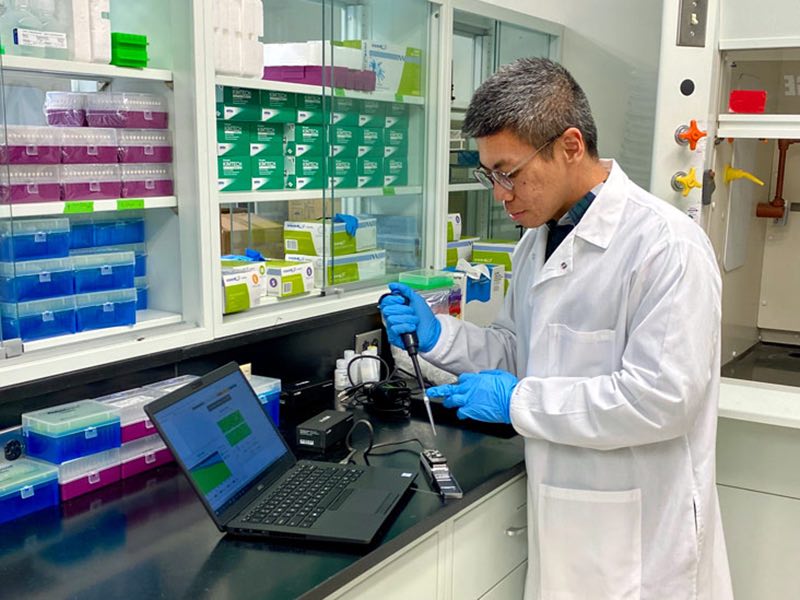EPA awards Tulane ‘virus hunter’ $1.24 million to turn wastewater into drinking water

Tiong Aw, PhD, assistant professor of Environmental Health Sciences at Tulane University School of Public Health and Tropical Medicine, analyzes water samples for viruses using a portable DNA sequencer.
Around 34 billion gallons of water go down the drain every day. Could some of it be recycled into drinking water in areas where water is becoming increasingly scarce?
The Environmental Protection Agency has awarded a Tulane University microbiologist a $1.24 million grant to develop more efficient ways to test and measure viruses in wastewater so engineers can evaluate how to best eradicate them. The goal is to validate these purification treatments to set standards for future water reclamation projects.
“A significant hurdle into making wastewater even close to drinkable is purging it of any pathogens, especially viruses,” said principal investigator Tiong Aw, PhD, assistant professor of Environmental Health Sciences at Tulane University School of Public Health and Tropical Medicine. “This project is a key step in making it feasible to reuse treated wastewater to address water scarcity.”
Approximately 2.2 billion gallons of wastewater are recovered and reused each day by more than 500 water reclamation facilities across the country. None can provide drinking water yet. Instead, they recycle wastewater for irrigation, industrial use or to replenish groundwater aquifers.
Aw is a waterborne virus hunter whose lab uses advanced genetic sequencing technology to find and analyze more than 100 types of viruses in wastewater samples. Most that pose public health risks are enteric viruses carried in human and animal waste from sewerage systems.
Wastewater treatment systems use chlorination or ultraviolet light (UV) to disinfect wastewater before discharging it back into the environment. These systems have drawbacks, Aw said.
“The effectiveness of chlorination or UV depends on the characteristics of the wastewater, the intensity or dose, and the amount of time the virus is exposed,” he said. “Typically, treated wastewater has a higher concentration of particles that can interfere with disinfection. Viruses can be absorbed onto these particles, which can allow them to survive the disinfection processes and cause a health hazard.”
Part of Aw’s project includes developing a comprehensive characterization of indigenous viruses in wastewater and designing new analytical methods to rapidly quantify these viruses from water samples and assess their viability.
Aw will work with five water reclamation facilities in California, Florida and Ohio to test his team’s methods under real-world conditions. He will also test water in New Orleans.
“New Orleans has significant de facto potable water reuse. The city draws drinking water from the Mississippi River which has numerous upstream wastewater discharges,” Aw said. “So this is also a very important issue for the city of New Orleans.”
The grant is part of the EPA’s Science to Achieve Results (STAR) Program, which aims to stimulate and support scientific and engineering research that advances the agency’s mission to protect human health and the environment.
